Balkinization
an unanticipated consequence of
Jack M. Balkin
Balkinization Symposiums: A Continuing List
E-mail:
Jack Balkin:
jackbalkin at yahoo.com
Bruce Ackerman
bruce.ackerman at yale.edu
Ian Ayres
ian.ayres at yale.edu
Corey Brettschneider
corey_brettschneider at brown.edu
Mary Dudziak
mary.l.dudziak at emory.edu
Joey Fishkin
joey.fishkin at gmail.com
Heather Gerken heather.gerken at yale.edu
Abbe Gluck abbe.gluck at yale.edu
Mark Graber
mgraber at law.umaryland.edu
Stephen Griffin
sgriffin at tulane.edu
Jonathan Hafetz
jonathan.hafetz at shu.edu
Jeremy Kessler
jkessler at law.columbia.edu
Andrew Koppelman
akoppelman at law.northwestern.edu
Marty Lederman
msl46 at law.georgetown.edu
Sanford Levinson
slevinson at law.utexas.edu
David Luban
david.luban at gmail.com
Gerard Magliocca
gmaglioc at iupui.edu
Jason Mazzone
mazzonej at illinois.edu
Linda McClain
lmcclain at bu.edu
John Mikhail
mikhail at law.georgetown.edu
Frank Pasquale
pasquale.frank at gmail.com
Nate Persily
npersily at gmail.com
Michael Stokes Paulsen
michaelstokespaulsen at gmail.com
Deborah Pearlstein
dpearlst at yu.edu
Rick Pildes
rick.pildes at nyu.edu
David Pozen
dpozen at law.columbia.edu
Richard Primus
raprimus at umich.edu
K. Sabeel Rahmansabeel.rahman at brooklaw.edu
Alice Ristroph
alice.ristroph at shu.edu
Neil Siegel
siegel at law.duke.edu
David Super
david.super at law.georgetown.edu
Brian Tamanaha
btamanaha at wulaw.wustl.edu
Nelson Tebbe
nelson.tebbe at brooklaw.edu
Mark Tushnet
mtushnet at law.harvard.edu
Adam Winkler
winkler at ucla.edu
Compendium of posts on Hobby Lobby and related cases
The Anti-Torture Memos: Balkinization Posts on Torture, Interrogation, Detention, War Powers, and OLC
The Anti-Torture Memos (arranged by topic)
Recent Posts
Graber on Reconstruction
Just A Few Blogs
ACS Blog
Alas, a Blog
Althouse
Arts and Letters Daily
Atrios (Eschaton)
Bill of Health
Buzzflash.com
Buzz Machine
Cato at Liberty
Juan Cole (Informed Comment)
Concurring Opinions
The Constitution in 2020
Corrente
Crooked Timber
Daily Howler
Daily Kos
Dana Boyd
Brad DeLong
Digby (Hullabaloo)
Discriminations
Daniel Drezner
Kevin Drum (Mother Jones)
Electrolite
En Banc
Eunomia (Daniel Larison)
Fafblog
Michael Froomkin (Discourse.net)
GovLab (Beth Noveck)
Rick Hasen (Election Law)
History News Network
How Appealing
Ignatz (Sam Heldman)
The Importance of (Ernie Miller)
Infolaw
Instapundit
International Economic Law and Policy Blog
IntLawGrrls
Jacob Levy
Jesus' General
Jurisdynamics
The Kitchen Cabinet
Mark Kleiman
Law Blog Central
Larry Lessig
Lawyers, Guns and Money
Liberal Oasis
Brian Leiter's Law School Reports
The Leiter Reports
Marginal Revolution
Megan McArdle
Memeorandum
Metafilter
Mirror of Justice
The New Republic
Newseum
No More Mister Nice Blog
Brendan Nyhan
Opinio Juris
Orcinus
The Originalism Blog
Pandagon
Passport (Foreign Policy)
Overcoming Bias
Political Animal (Washington Monthly)
Political Theory Daily Review
Political Wire (Taegan Goddard)
The Poor Man
Virginia Postrel
Prawfsblawg
Public Reason
Jonathan Rauch
Raw Story
Redstate
ReligiousLeftLaw.com
Reporters Committee For Freedom of the Press
Reproductive Rights Blog
Rothman's Roadmap to the Right of Publicity
SCOTUS Blog
Seeing the Forest
Clay Shirky
The Shifted Librarian
The Situationist
Larry Solum (Legal Theory)
Andrew Sullivan
Talking Points Memo
Talk Left
Tapped
Tbogg
TechPresident
The Paper Chase (Jurist)
Tom Paine
Tom Tomorrow (This Modern World)
Eve Tushnet
Uggabugga
University of Chicago Law School Faculty Blog
Unqualified Offerings
The Volokh Conspiracy
War and Piece (Laura Rozen)
Wampum
Oliver Willis
Wonkette
Written Description
Matthew Yglesias
Yin
Your Choice of Feeds
1. XML
powered by
2. Atom Feed
3. RSS 2.0
Graber on Reconstruction
Stephen Griffin
For the Balkinization Symposium on Mark A. Graber, Punish Treason, Reward Loyalty: The Forgotten Goals of Constitutional Reform after the Civil War (University of Kansas Press, 2023). With Punish
Treason, Reward Loyalty, Mark Graber launches a remarkable scholarly
project aimed at decisively shifting our understanding of the Fourteenth
Amendment and the Reconstruction Amendments generally. This multi-volume effort is called “The Forgotten
Fourteenth Amendment,” which refers to Graber’s principal objective of
demonstrating that our historical understanding of the Reconstruction
amendments is radically incomplete. Graber’s project
decenters (without necessarily deemphasizing) section 1 of the
Fourteenth Amendment, the fount of an enormous river of judicial doctrine. Why?
Graber foregrounds the political and constitutional objectives of the
Republican Party in the immediate aftermath of the Civil War. The effect is to treat the Party as an
institution co-equal to the branches of government. Situating the Republican Party in those
fraught circumstances in turn foregrounds a key issue well known to historians,
but not much featured in today’s law school casebooks – what conditions
Republicans should impose on the former rebel states before readmitting them to
Congress and thus to national politics itself.
Placing the emphasis on the readmission issue has the initial and
somewhat startling effect of making us realize that Republicans had to
be up to more than advancing the cause of human rights in formulating the
Fourteenth Amendment. Graber advances
his claims with high confidence because he realized a substantial trove of
evidence on the Reconstruction Congress had been overlooked. It appears scholars, especially legal
scholars, concentrating on discussions of section 1 in the 39th
Congress as recorded in the Congressional Globe were using only a
fraction of the relevant evidence.
Graber describes how there were many discussions relevant to the
Fourteenth Amendment that were not explicitly identified in the Globe as
such. Discussions revolving around
readmission, for example, were extensive and shed considerable light on the
objectives of Republicans in formulating the Reconstruction Amendments. Graber’s analysis
and conclusions are thus based on a far wider array of historical evidence than
any previous discussion of the Fourteenth Amendment, at least by legal
academics. What does his analysis show? Republicans realized they were confronting an
intransigent South whose elites had no intention of changing their ways. They sought to continue slavery after the
War, even if in another form. Further,
Republicans had concrete reason to think that once back in Congress, Southern
Democrats would demand the payment of Confederate war debts and continuation of
de facto rebel rule. In order to respond
to this looming challenge, Graber describes how Republicans wanted to create a
situation in which the former rebel states would have to provide various
guarantees. Guarantees of rights were
certainly part of the Republican plan, but they were not the principal
focus. Graber’s key thesis might be
described as structure over rights. As he puts it: “The Republicans who framed
the Fourteenth Amendment thought constitutions work by configuring
politics. They regarded constitutions as
mechanisms that privilege coalitions with particular interests and values. . .
. The point of constitutional reform was to configure politics in such a way
that would enable the people who remained loyal to the Union to control how the
Thirteenth Amendment was interpreted and implemented in the foreseeable
future.” This book is
volume 1 of a multi-volume project and does not lay out all the evidence for
Graber’s thesis. The book consists of a
lengthy preface, which serves as an overview of the entire series, followed by
an introduction, five chapters and a conclusion. By setting out his themes so thoroughly in
the preface Graber risks getting ahead of the argument he presents in this single
volume. Not all of Graber’s themes and
arguments emerge clearly as his discussion walks up to the formation of the
amendments without considering their content in detail. Scholars who see section 1 as central to
Reconstruction might wonder what happened to the Civil Rights Act of 1866. Graber’s objective in this book is limited to
establishing the lens through which the Republican Party viewed the tasks of
Reconstruction. Not taking on the
details of the Fourteenth Amendment, however, leaves the argument in this
volume hanging. Scholars who nonetheless
are interested in the legal content of section 1 and whether, if implemented
properly, it could have avoided the signal failure Reconstruction became for
the dream of a multiracial democracy might wonder why they should pay attention
as Graber spins out his project through the remaining volumes (which might take
some time!). I believe there are several
sound reasons. Let me preface these
reasons with an observation drawn from my own studies of American constitutionalism. I began serious study
of American constitutionalism a few years prior to the bicentennial of the
Constitution in 1987. So I was a witness
to a distinct shift in scholarly attitudes toward the Constitution, although it
was certainly not universal. At the time
of the bicentennial, scholars saw the Constitution as more virtuous than flawed
– judged over the long run it served its country well as a guarantor of
democracy and stable government despite the significant compromises, practical
and moral, that were necessary for its ratification. Those compromises, including the protection
of slavery, were relegated to the background of accounts of what happened at
the Federal Convention, although not forgotten.
Since the bicentennial scholars have migrated to a more critical view of
the bargains of the founding era. The
compromises with slavery are foregrounded in recent accounts and regarded as an
essential element of a deeply flawed and morally unacceptable republic. At the same time,
most constitutional scholars see the eighteenth-century Constitution as
redeemable. Where an earlier generation
valorized the founders and their eighteenth-century Enlightenment achievement,
more recent generations valorize abolitionists, Abraham Lincoln, and the
Republican reconstructors as the true founders of today’s multiracial
democracy. The Reconstruction Amendments
are seen as directly addressing and solving many (although certainly not all)
of the problems and compromises in the 1787 Constitution. There is an ironic parallelism at work here
which nonetheless has had an enormous influence – that is, the original
Constitution was terribly flawed despite being understood at one time by
Americans as near-perfect, but Reconstruction, at least properly understood, is
nearly without flaw (although undoubtedly limited in certain respects). Indeed, a vast array of legal scholars, professional
organizations, and starry-eyed litigation shops converge on representing
Reconstruction as when America finally got it right. This is precisely
where Graber’s project poses a deeply unsettling challenge to what has become
conventional wisdom. Suppose, just
suppose, that Reconstruction was a product of nineteenth-century values and
concerns, just as the original Constitution was a product of eighteenth-century
values. And suppose those values are not
fully consonant with our own. After all,
the example of the treatment of women by the Republican reconstructors is a
familiar one. This point can be
extended. Graber’s work, along with that
by other insightful historians, suggests that the Reconstruction Amendments
themselves, in fact the entire project of Reconstruction, was both the product
of political compromise and was inextricably linked with nineteenth-century
values different from our own. Have
contemporary lawyers invested too much hope in the First Reconstruction? And has this been at the expense of studying
the genuine constitutional innovations of the Second Reconstruction of the
civil rights movement? Moving back to
constitutional doctrine, why should we take notice of Graber’s work in light of
the undoubted centrality of section 1 to contemporary constitutional law? In addition to the benefits of historical
accuracy and potential insights, I believe there are several reasons worth
considering. Second, a history
lesson about the wages of compromise can be useful. Although it is usually not put this way, I
suggest contemporary scholars often see section 1 as fully adequate to solve
the problems of racial equality, both during Reconstruction and today. But not all the Republican reconstructors
agreed. They knew the Reconstruction
amendments were the product of compromise and contained provisions that
hampered their ability to achieve their goals.
To be sure, some legal scholars have acknowledged, for example, problems
with the limited reach of the Fifteenth Amendment. As Graber suggests, however, (although not
fully in this volume) all of the amendments show the debilitating effects of
legislative compromise. This point is surely
essential to understanding the fate of Reconstruction. Third, Graber’s
project helps us better understand and make progress on what many scholars
consider a critically important issue, indeed something of a mystery: why did
Reconstruction fail and could it have succeeded? Graber makes the point repeatedly that today
we are used to the judiciary enforcing the Constitution, whereas
nineteenth-century Republicans, imbued with a spirit of partisan supremacy
deriving from Jacksonian America, preferred legislative enforcement. Whether Reconstruction succeeded or failed,
it is arguable we should hold not the branches of government responsible, but a
political party. A single political
party was collectively in charge of Reconstruction, and that counsels we
should avoid siloing the discussion of its success or failure solely within the
branches of government. Would you like a
political party in charge of whether you have rights? Likely not, but Republicans didn’t see a
problem with their party-based approach until perhaps it was too late. Graber’s approach has the effect of posing
the issue of the outcome of Reconstruction in a useful way – if we want section
1 to succeed, how is that possible without arranging continual political and
legislative support? Fourth, the last
point suggests the utility of a “state-building” perspective on the quest for
racial equality and a multiracial democracy.
Political parties and social movements can initiate constitutional
change, but to maintain that change over time, government institutions must be
provided with the legitimacy to enforce constitutional values over the long
term. Only in the twentieth century did
Americans learn that to preserve voting rights, for example, the tendency to
turn to the judiciary to enforce rights simply would not work. Only the administrative state could provide
the necessary state-level enforcement to make the Voting Rights Act operational. And this lesson was learned well only after
the Great Depression and the New Deal.
Effective enforcement of civil rights and the achievement of something
close to a level playing field for those “loyal” to the Union (to use the terms
of Republican reconstructors) would happen only in the twentieth century. Legal scholars should be more cautious about
attributing all of the necessary changes with respect to racial equality to the
First Reconstruction. The Second is
equally relevant to understanding how racial equality can best be achieved and
maintained.
Posted
9:30 AM
by Stephen Griffin [link]
Books by Balkinization Bloggers

Gerard N. Magliocca, The Actual Art of Governing: Justice Robert H. Jackson's Concurring Opinion in the Steel Seizure Case (Oxford University Press, 2025)

Linda C. McClain and Aziza Ahmed, The Routledge Companion to Gender and COVID-19 (Routledge, 2024)

David Pozen, The Constitution of the War on Drugs (Oxford University Press, 2024)

Jack M. Balkin, Memory and Authority: The Uses of History in Constitutional Interpretation (Yale University Press, 2024)
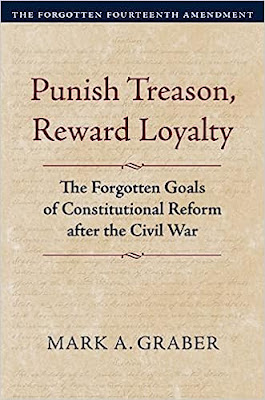
Mark A. Graber, Punish Treason, Reward Loyalty: The Forgotten Goals of Constitutional Reform after the Civil War (University of Kansas Press, 2023)
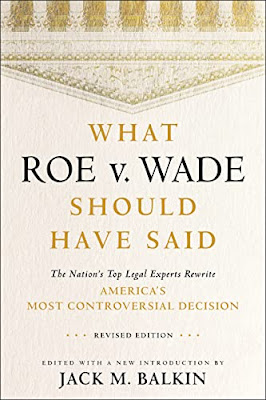
Jack M. Balkin, What Roe v. Wade Should Have Said: The Nation's Top Legal Experts Rewrite America's Most Controversial Decision - Revised Edition (NYU Press, 2023)

Andrew Koppelman, Burning Down the House: How Libertarian Philosophy Was Corrupted by Delusion and Greed (St. Martin’s Press, 2022)

Gerard N. Magliocca, Washington's Heir: The Life of Justice Bushrod Washington (Oxford University Press, 2022)
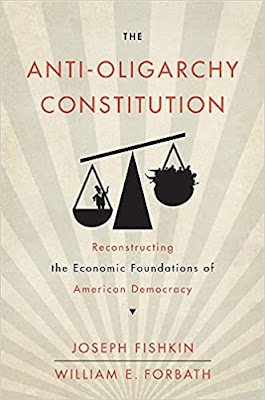
Joseph Fishkin and William E. Forbath, The Anti-Oligarchy Constitution: Reconstructing the Economic Foundations of American Democracy (Harvard University Press, 2022)
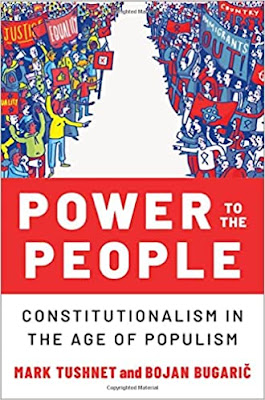
Mark Tushnet and Bojan Bugaric, Power to the People: Constitutionalism in the Age of Populism (Oxford University Press 2021).

Mark Philip Bradley and Mary L. Dudziak, eds., Making the Forever War: Marilyn B. Young on the Culture and Politics of American Militarism Culture and Politics in the Cold War and Beyond (University of Massachusetts Press, 2021).

Jack M. Balkin, What Obergefell v. Hodges Should Have Said: The Nation's Top Legal Experts Rewrite America's Same-Sex Marriage Decision (Yale University Press, 2020)

Frank Pasquale, New Laws of Robotics: Defending Human Expertise in the Age of AI (Belknap Press, 2020)

Jack M. Balkin, The Cycles of Constitutional Time (Oxford University Press, 2020)

Mark Tushnet, Taking Back the Constitution: Activist Judges and the Next Age of American Law (Yale University Press 2020).

Andrew Koppelman, Gay Rights vs. Religious Liberty?: The Unnecessary Conflict (Oxford University Press, 2020)

Ezekiel J Emanuel and Abbe R. Gluck, The Trillion Dollar Revolution: How the Affordable Care Act Transformed Politics, Law, and Health Care in America (PublicAffairs, 2020)

Linda C. McClain, Who's the Bigot?: Learning from Conflicts over Marriage and Civil Rights Law (Oxford University Press, 2020)
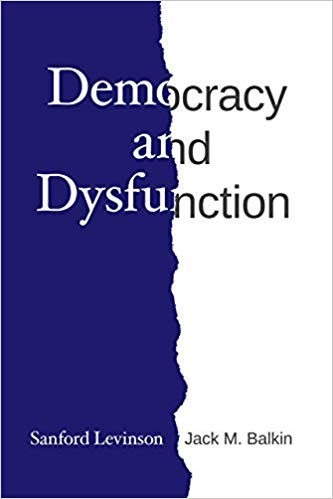
Sanford Levinson and Jack M. Balkin, Democracy and Dysfunction (University of Chicago Press, 2019)

Sanford Levinson, Written in Stone: Public Monuments in Changing Societies (Duke University Press 2018)

Mark A. Graber, Sanford Levinson, and Mark Tushnet, eds., Constitutional Democracy in Crisis? (Oxford University Press 2018)

Gerard Magliocca, The Heart of the Constitution: How the Bill of Rights became the Bill of Rights (Oxford University Press, 2018)

Cynthia Levinson and Sanford Levinson, Fault Lines in the Constitution: The Framers, Their Fights, and the Flaws that Affect Us Today (Peachtree Publishers, 2017)

Brian Z. Tamanaha, A Realistic Theory of Law (Cambridge University Press 2017)

Sanford Levinson, Nullification and Secession in Modern Constitutional Thought (University Press of Kansas 2016)

Sanford Levinson, An Argument Open to All: Reading The Federalist in the 21st Century (Yale University Press 2015)

Stephen M. Griffin, Broken Trust: Dysfunctional Government and Constitutional Reform (University Press of Kansas, 2015)

Frank Pasquale, The Black Box Society: The Secret Algorithms That Control Money and Information (Harvard University Press, 2015)

Bruce Ackerman, We the People, Volume 3: The Civil Rights Revolution (Harvard University Press, 2014)
Balkinization Symposium on We the People, Volume 3: The Civil Rights Revolution

Joseph Fishkin, Bottlenecks: A New Theory of Equal Opportunity (Oxford University Press, 2014)

Mark A. Graber, A New Introduction to American Constitutionalism (Oxford University Press, 2013)

John Mikhail, Elements of Moral Cognition: Rawls' Linguistic Analogy and the Cognitive Science of Moral and Legal Judgment (Cambridge University Press, 2013)

Gerard N. Magliocca, American Founding Son: John Bingham and the Invention of the Fourteenth Amendment (New York University Press, 2013)

Stephen M. Griffin, Long Wars and the Constitution (Harvard University Press, 2013)

Andrew Koppelman, The Tough Luck Constitution and the Assault on Health Care Reform (Oxford University Press, 2013)

James E. Fleming and Linda C. McClain, Ordered Liberty: Rights, Responsibilities, and Virtues (Harvard University Press, 2013)
Balkinization Symposium on Ordered Liberty: Rights, Responsibilities, and Virtues

Andrew Koppelman, Defending American Religious Neutrality (Harvard University Press, 2013)

Brian Z. Tamanaha, Failing Law Schools (University of Chicago Press, 2012)

Sanford Levinson, Framed: America's 51 Constitutions and the Crisis of Governance (Oxford University Press, 2012)

Linda C. McClain and Joanna L. Grossman, Gender Equality: Dimensions of Women's Equal Citizenship (Cambridge University Press, 2012)

Mary Dudziak, War Time: An Idea, Its History, Its Consequences (Oxford University Press, 2012)

Jack M. Balkin, Living Originalism (Harvard University Press, 2011)

Jason Mazzone, Copyfraud and Other Abuses of Intellectual Property Law (Stanford University Press, 2011)

Richard W. Garnett and Andrew Koppelman, First Amendment Stories, (Foundation Press 2011)

Jack M. Balkin, Constitutional Redemption: Political Faith in an Unjust World (Harvard University Press, 2011)

Gerard Magliocca, The Tragedy of William Jennings Bryan: Constitutional Law and the Politics of Backlash (Yale University Press, 2011)

Bernard Harcourt, The Illusion of Free Markets: Punishment and the Myth of Natural Order (Harvard University Press, 2010)

Bruce Ackerman, The Decline and Fall of the American Republic (Harvard University Press, 2010)
Balkinization Symposium on The Decline and Fall of the American Republic

Ian Ayres. Carrots and Sticks: Unlock the Power of Incentives to Get Things Done (Bantam Books, 2010)

Mark Tushnet, Why the Constitution Matters (Yale University Press 2010)
Ian Ayres and Barry Nalebuff: Lifecycle Investing: A New, Safe, and Audacious Way to Improve the Performance of Your Retirement Portfolio (Basic Books, 2010)
.jpg)
Jack M. Balkin, The Laws of Change: I Ching and the Philosophy of Life (2d Edition, Sybil Creek Press 2009)

Brian Z. Tamanaha, Beyond the Formalist-Realist Divide: The Role of Politics in Judging (Princeton University Press 2009)
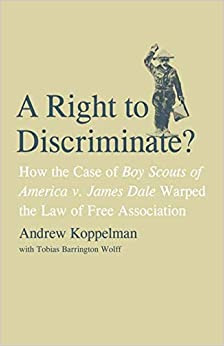
Andrew Koppelman and Tobias Barrington Wolff, A Right to Discriminate?: How the Case of Boy Scouts of America v. James Dale Warped the Law of Free Association (Yale University Press 2009)

Jack M. Balkin and Reva B. Siegel, The Constitution in 2020 (Oxford University Press 2009)
Heather K. Gerken, The Democracy Index: Why Our Election System Is Failing and How to Fix It (Princeton University Press 2009)

Mary Dudziak, Exporting American Dreams: Thurgood Marshall's African Journey (Oxford University Press 2008)

David Luban, Legal Ethics and Human Dignity (Cambridge Univ. Press 2007)

Ian Ayres, Super Crunchers: Why Thinking-By-Numbers is the New Way to be Smart (Bantam 2007)

Jack M. Balkin, James Grimmelmann, Eddan Katz, Nimrod Kozlovski, Shlomit Wagman and Tal Zarsky, eds., Cybercrime: Digital Cops in a Networked Environment (N.Y.U. Press 2007)
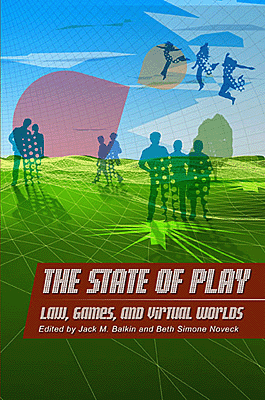
Jack M. Balkin and Beth Simone Noveck, The State of Play: Law, Games, and Virtual Worlds (N.Y.U. Press 2006)

Andrew Koppelman, Same Sex, Different States: When Same-Sex Marriages Cross State Lines (Yale University Press 2006)
Brian Tamanaha, Law as a Means to an End (Cambridge University Press 2006)
Sanford Levinson, Our Undemocratic Constitution (Oxford University Press 2006)
Mark Graber, Dred Scott and the Problem of Constitutional Evil (Cambridge University Press 2006)
Jack M. Balkin, ed., What Roe v. Wade Should Have Said (N.Y.U. Press 2005)
Sanford Levinson, ed., Torture: A Collection (Oxford University Press 2004)
Balkin.com homepage
Bibliography
Conlaw.net
Cultural Software
Writings
Opeds
The Information Society Project
BrownvBoard.com
Useful Links
Syllabi and Exams